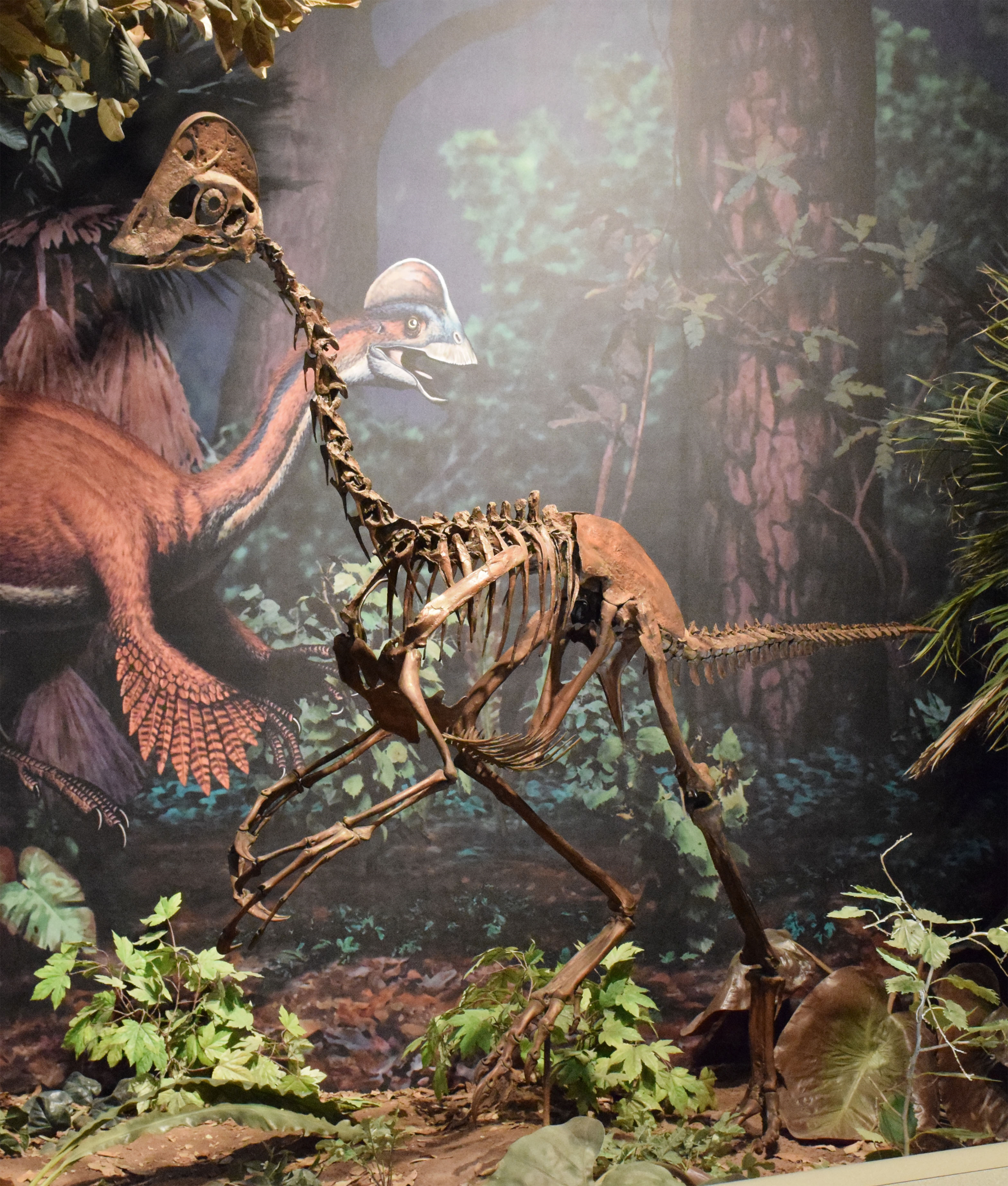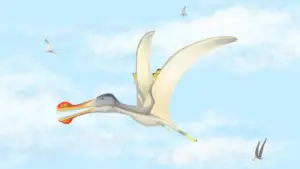Which Dinosaurs Had Feathers? Unveiling the Mystery!
Many theropod dinosaurs, including Velociraptor, Therizinosaurus, and the famous Tyrannosaurus rex, had feathers. The bird-like Archaeopteryx, often considered a transitional species, also sported feathers.
Discovering which dinosaurs had feathers has transformed our understanding of prehistoric life. Initially, scientists assumed all dinosaurs had scaly skin, much like modern reptiles. However, fossil evidence over the last few decades has painted a different picture, revealing that feathers were not exclusive to birds.
This feathered group, largely composed of theropods – the carnivorous dinosaurs that eventually gave rise to birds – shows a variety of plumage, from simple fuzz to complex flight feathers. This insight has shifted perceptions, illustrating an evolutionary transition from dinosaurs to birds. Such discoveries are crucial for both paleontology enthusiasts and researchers, providing a more accurate image of these ancient creatures and their environments. Understanding the feathered past of these species is key to unravelling the mysteries of dinosaur biology and behavior.
The Feathered Dinosaurs Revelation
The idea of dinosaurs with feathers was once almost heretical. Today, it is a scientific fact that not only captures our imagination but also transforms our understanding of these ancient beasts. The ‘Feathered Dinosaurs Revelation’ challenges long-held perceptions and invites us into a world where dinosaurs are not just the scaly giants of the past but creatures that had more in common with modern birds than we ever thought possible.
Early Clues From Fossil Records
Fossil records are like history books of the Earth’s ancient life. They give us glimpses into the past. Early clues about feathered dinosaurs first came in the form of unique markings alongside dinosaur bones. These markings hinted at the presence of somethingmore than just scales.
Fossils displaying feather-like structures created a buzz among paleontologists. These structures suggested some dinosaurs might have been decked out in feathers, at least partially. Such insights paved the way for groundbreaking research.
Breakthrough Discoveries
The science community’s understanding of feathered dinosaurs skyrocketed with a series of breakthrough discoveries. One such discovery was the fossil of Archaeopteryx, an ancient creature with both avian and reptilian features. This creature linked dinosaurs and birds.
- Velociraptor: Not just a star of the big screen, but also a feathered predator.
- Therizinosaurus: Known for its massive claws, it also sported a feathery mane.
- Oviraptor: Once thought to be an egg thief, this dinosaur’s feathered arms suggest a more complex story.
These feathered giants changed the narrative, offering a whole new lens through which to view dinosaur life and behavior. Key findings in China and Mongolia brought to light incredible specimens with well-preserved feathers, bolstering the theory and bringing the feathered past to vivid life.

Credit: www.amazon.com
Feathers Aren’t Just For Birds
Think of feathers and you might picture a bird soaring in the sky. But birds weren’t the first to flaunt these fluffy structures. Long before birds took to the air, feathers were a fashion statement among many dinosaurs too. Say goodbye to the scaly creatures of old movies – the real Jurassic world was much fluffier!
Types Of Feathered Dinosaurs
Scientists keep digging up new surprises under the earth. Turns out, a lot of dinosaurs wore feathers like a trendy coat. From tiny raptors to the mighty T. rex, let’s meet some:
- Velociraptor: Not the scaly hunter you saw in movies, but a feathered hunter.
- Tyrannosaurus rex: Even this fierce giant may have had a feathery touch in its youth.
- Anchiornis: A bit like a bird, this dino sported feathers and could glide.
Function Of Feathers In Non-avian Dinosaurs
Feathers on dinosaurs? Yes, and for good reasons! Why did they have them?
- Keeping warm was a top job for dinosaur feathers. They acted like a cozy blanket.
- Show-off time! Bright feathers might have helped them look great for potential mates.
- Little dinos could hide better with camouflage feathers blending them into the scenery.
Highlight Species With Feathers
Highlight Species With Feathers: Dinosaurs stir up images of massive, scaly monsters in many people’s minds. Yet recent discoveries paint a different picture, revealing a surprising feature of some species: feathers. This section shines a light on dinosaurs known for their feathery coats. These creatures were not just the fierce reptiles we once imagined. They displayed a blend of bird-like characteristics that continue to fascinate researchers and enthusiasts alike.
Microraptor & Its Four Wings
The Microraptor stands out in the dinosaur kingdom. This small, agile creature had a unique feature: four feathered wings. Scientists believe it glided through the forest canopy, a testament to the diverse evolution of feathered dinosaurs. The Microraptor’s feathers were not just for show – they played a crucial role in its mobility.
- Size: Around the size of a modern crow.
- Age: Early Cretaceous period.
- Habitat: Woodland environments.
The Iconic Velociraptor
Velociraptor, famous for its role in movies, was actually feathered. Contrary to its Hollywood portrayal, this predator sported a coat of feathers, adding to its hunting prowess. This feature suggests it was a more visually daunting and sophisticated hunter than previously thought.
| Characteristic | Detail |
|---|---|
| Length | Up to 2 meters (6.6 feet) |
| Diet | Carnivorous, hunting in packs |
| Period | Late Cretaceous period |
Credit: kinnu.xyz
Evolution’s Feathered Tale
The story of evolution is a riveting one, especially when it comes to the majestic creatures that once roamed our planet – the dinosaurs. But Imagining these fearsome beings with delicate feathers might seem like a fantasy. Yet, evidence tells us this was reality for some dinosaur species. This revelation has reshaped our understanding of their link to modern birds. Let’s unravel the mystery of which dinosaurs had feathers and explore how this finding fits into the grand context of evolution.
Link Between Dinosaurs And Modern Birds
Scientists have long been puzzled by the evolution of birds. The discovery of feathered dinosaurs provided a missing clue. Feathers were not just for flying; they helped with insulation and display too. It turns out that modern birds descend from a group of two-legged dinosaurs known as theropods. The Velociraptor and the feathered Sinosauropteryx show this journey from scales to feathers.
Feathers And The Tree Of Life
Feathers are more than just fashionable; they tell a deep story about life on Earth. They connect the dots in the tree of life, tying together different species through a common ancestor. Dinosaurs like Archaeopteryx act as a bridge in this evolutionary tale. Surprisingly, not all feathered dinosaurs could fly. Some used their plumage for warmth, camouflage, or to impress mates. Feathered dinosaurs come in a fascinating array, all with their unique place on the tree of life.
Implications For Paleontology And Science
The discovery that dinosaurs had feathers has transformed the field of paleontology. It has shifted the way scientists view these prehistoric creatures. Once seen as scaly, reptilian giants, many dinosaurs are now envisioned as feathered, bird-like beings. This revelation opens new chapters in the study of evolution, behavior, and the ecology of ancient times.
Changing Perceptions Of Dinosaurs
The image of dinosaurs has undergone a dramatic makeover. Classic portrayals depicted these creatures with leathery hides and reptilian features. They were the ‘terrible lizards’ of our childhood books and museums. New research, however, paints a different picture. Dinosaurs like Velociraptor, Microraptor, and the famous Tyrannosaurus rex likely sported feathers. This change in perception affects everything from scientific classification to public understanding and even pop culture.
- Theropods, once viewed as exclusive flesh-eaters, had close ties to birds.
- Feathered dinosaurs suggest a variety of functions, from insulation to mating displays.
Advanced Technologies In Fossil Study
The advancement of technology has been pivotal in uncovering the feathered past of dinosaurs. Cutting-edge tools reveal details impossible to see before. Techniques like laser-stimulated fluorescence (LSF) illuminate soft tissues preserved alongside bones. Sophisticated imaging and molecular analysis indicate feather pigments. This evidence proves invaluable in understanding the colorful lives of these ancient creatures.
| Technology | Use in Fossil Study |
|---|---|
| CT Scanning | Visualizes internal structures without damaging fossils |
| LSF Imaging | Highlights organic remnants like feathers |
| Spectroscopy | Identifies chemical markers for pigmentation |
These technological breakthroughs allow paleontologists to reconstruct life-like images of dinosaurs. They redefine the ancient world, bringing it closer to the birdlike fauna we know today.

Credit: www.si.edu
The Enduring Mysteries
Did you know some dinosaurs had feathers like birds? Scientists still scratch their heads over many mysteries. The prehistoric era hides many clues.
Unanswered Questions In Dinosaur Evolution
Dinosaurs evolved over millions of years. But not everything is clear about how they changed.
Here are some puzzles scientists are trying to solve:
- Which dinosaurs had feathers and why?
- How did features help them survive?
- Did all feathered dinosaurs fly?
The Frontier Of Dinosaur Research
Dinosaur research is thrilling. New discoveries keep coming! Every find teaches us more about their lives.
Areas experts are exploring now:
| Fossil Analysis | Genetic Investigations | Behavioral Studies |
|---|---|---|
| Studying well-preserved fossils | Looking at DNA connections with birds | Guessing how they acted |
Every new find can change what we know. The adventure never ends!
Conclusion
As we journey back in time, the discovery of feathered dinosaurs reshapes our understanding of prehistoric life. From the mighty Velociraptor to the mind-boggling Microraptor, feathers were more common than once believed. Their roles in display, insulation, and flight hint at a complex, evolved world.
These ancient creatures continue to fascinate and remind us of nature’s ever-evolving tapestry. Join us again as we uncover more secrets from the age of dinosaurs.



